The Cong is one of the ethnic groups in Vietnam with a population of over 2,000 who reside mainly in Muong Te district in the northern province of Lai Chau. The ethnic group now still keeps intact many of their unique cultural features.
Besides a treasure of myths and allegories, the Cong ethnic group has practiced a unique custom of hamlet worshiping. It is not only a spiritual rite but also a community cultural activity to bring people in the hamlet together.
Hamlet worshipping must be done annually in April before a new crop. The rite prays to the water and forest genies for a bumper harvest and to protect the villagers from downing or traffic accidents. The village chief is responsible for the preparation of the rite and then the sorcerer who is selected by the villagers performs the sacred rite.
On ritual day, when everyone is busy taking their offerings to the house of the village chief, the sorcerer and his wife prepare a tray of offerings, including rice, two silver bracelets, two eggs, leaves and a bunch of colourful thread.
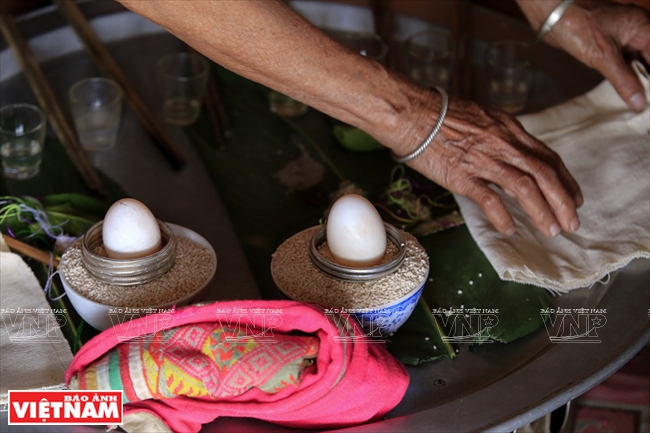
The tray of offerings prepared by the sorcerer.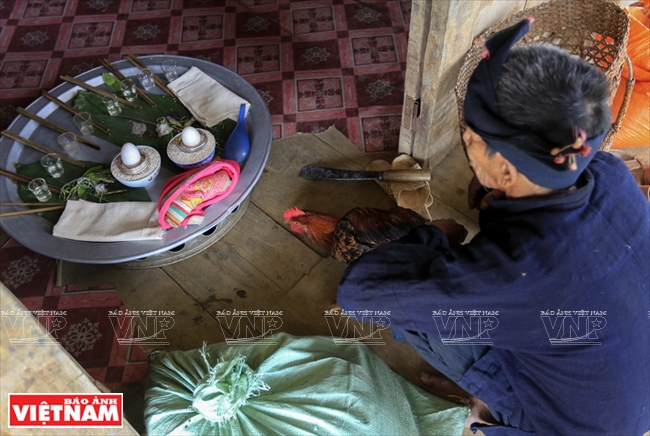
The sorcerer performs a rite at his house before bringing offerings to the sacred place where
the main rite will take place. .
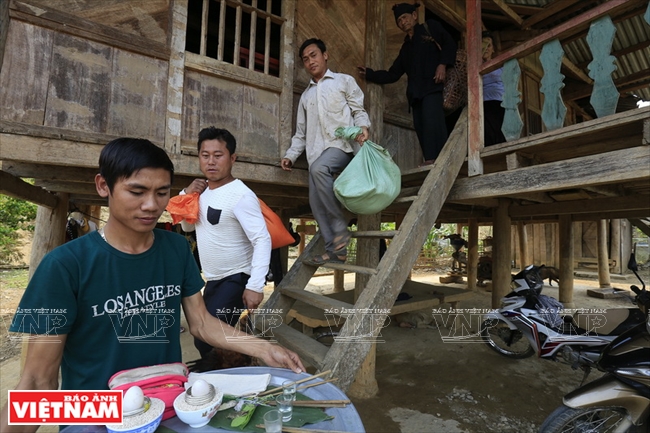
The Cong people bring offerings from the sorcerer to the sacred place.
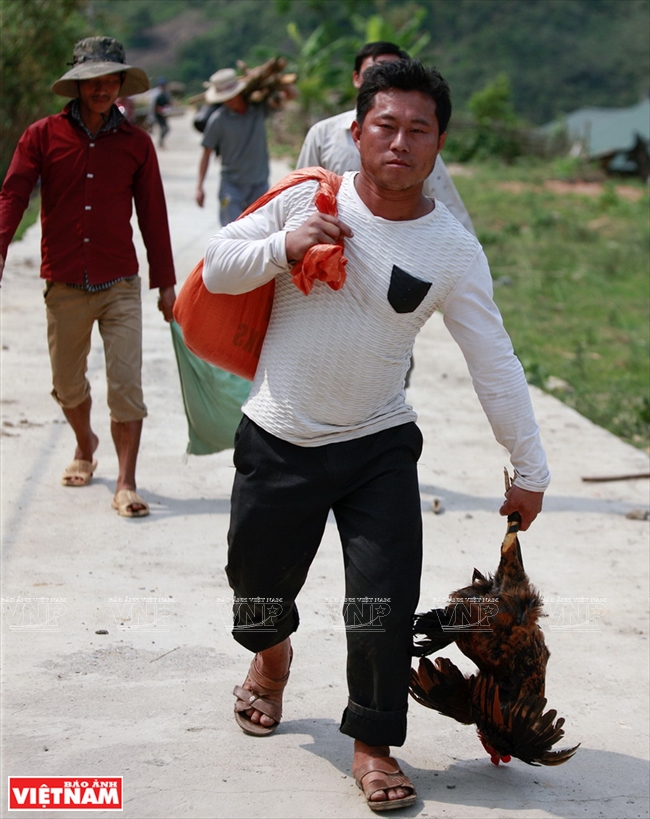
Besides offerings prepared by the sorcerer, the villagers bring rice, cocks and pigs to offer to the genies.
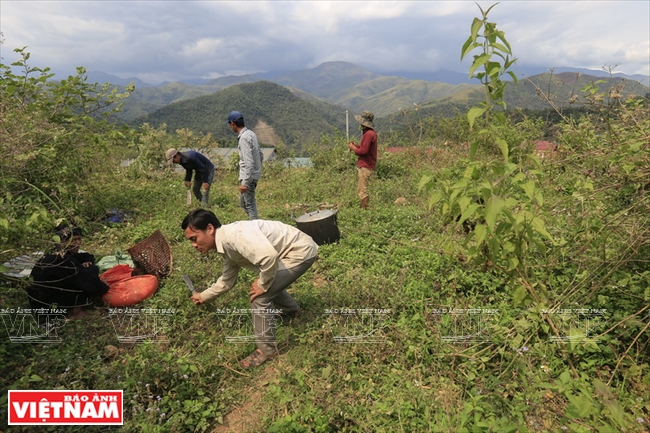
The villagers cut trees and clean the ground where there is a source of water.
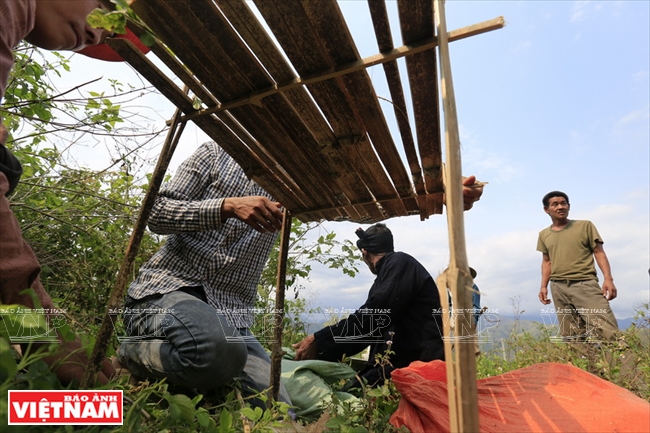
Before the ceremony, men build a small stilt house to welcome the genies to witness their worship.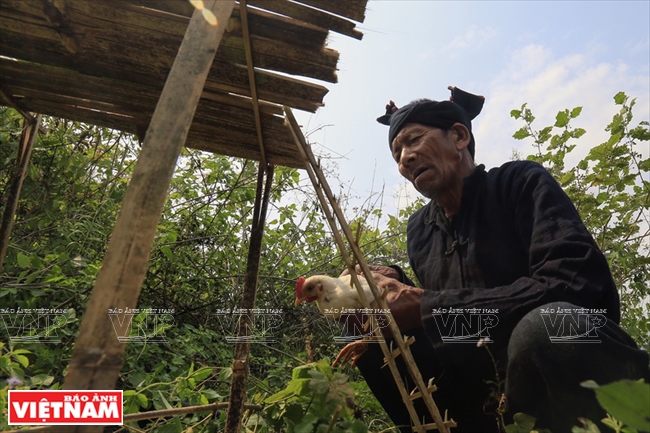
The sorcerer read the first prayer to invite the genies to attend the ceremony.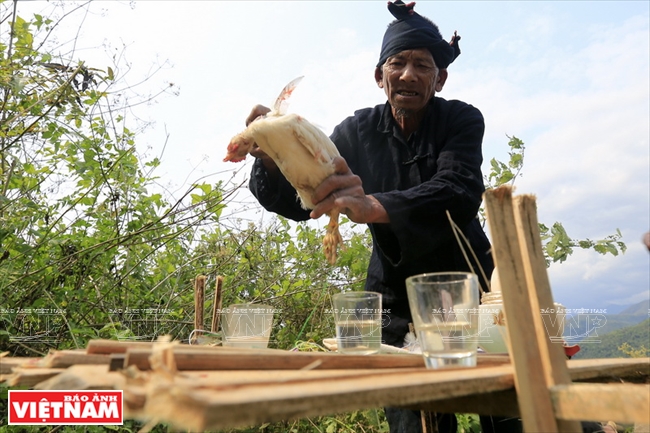
The sorcerer killed chickens as sacrifices to the genies with the hope that the genies will protect the villagers.
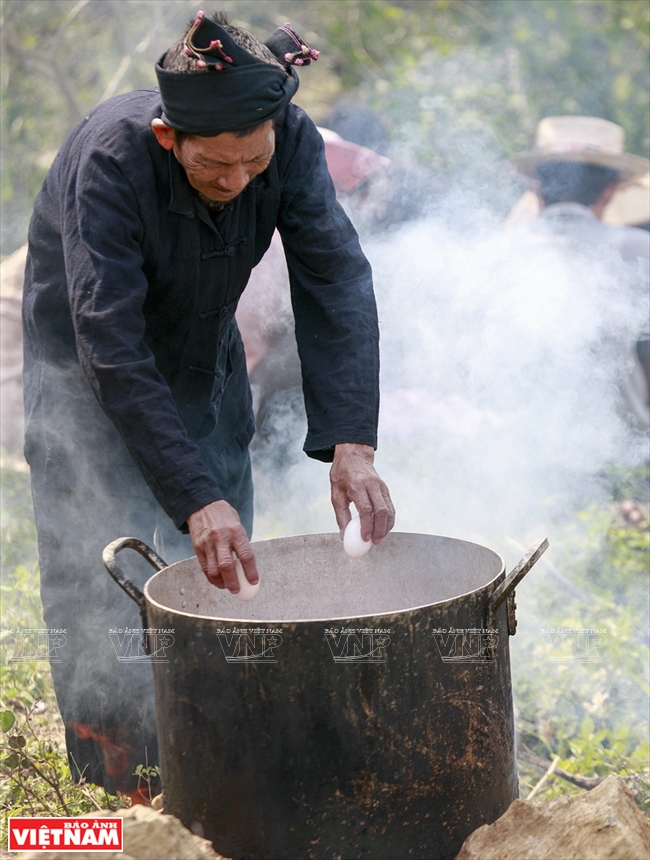
They then cook chickens, pigs and rice to give thanks to the genies.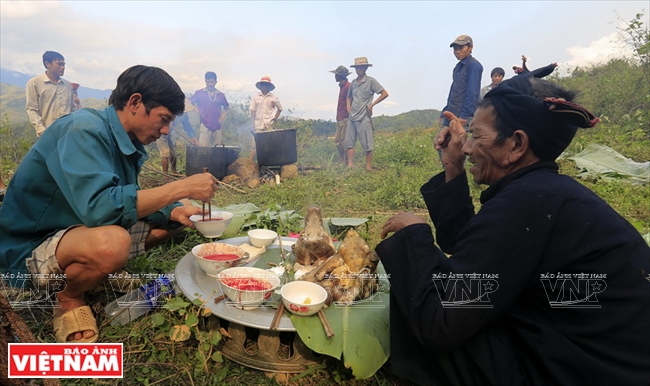
Men help the sorcerer to prepare offerings for the worshiping ceremony.
The sorcerer pours wine into cups to invite the genies.
Looking at the tendons on the liver of the pig and tells the villagers about the results of the ceremony.

Only men participate in the worshiping ceremony. After the ceremony, they enjoy the food.
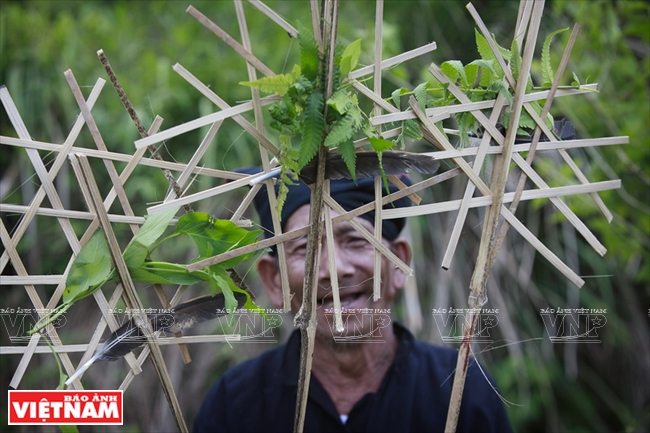
When the signal is given, no one can go in or out of the village. |
The worshiping ceremony is carried out in a sacred place where there is a source of water. The Cong believe that the two genies will be present at the place during the ceremony. This place is entirely blocked off all year round, except for ritual day.
To prepare for the rite, young men in the hamlet will cut trees and clean the grounds and then they use bamboos to build a house-on-stilts where offerings are placed for the genies.
The sorcerer starts the rite by pouring wine into small cups and reading the prayers. Lo Van Cho who has worked as a sorcerer for more than 20 years in Nam Puc hamlet, Muong Te, Lai Chau said: “The prayers which invites the genies to hear the villager’s wishes are handed downed from their ancestors”.
Then, with help from the young men, the sorcerer performs some other rites, such as killing chickens and a pig to sacrifice to the genies. The meat is then cooked with rice and water in a large pot. When the food is well-done, it is placed on a tray for the sorcerer to perform the second ceremony. The chicken feathers will be plugged into the foot of the new house to eliminate evil.
The most important part of the ceremony is when the sorcerer looks at the tendons on the liver of the pig and tells the villagers about the results of the ceremony.
When the ceremony ends, the villagers enjoy the food and the sorcerer will knit a curtain and put the leaves and chicken feathers on it to give the signal that it is forbidden to leave or enter the hamlet for a few days.
By Viet Cuong